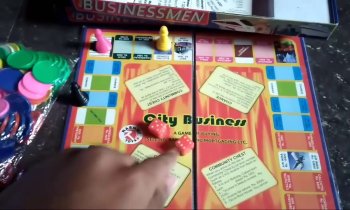Do you ever think about a game that features riddles, magnets and a box in the form of platforming gameplay? There is one available in gaming stores for only $3.99 (Rs 275): Magnibox - a colorful and challenging puzzle game about a magnet that's also a box. The game's developers wanted to bring you a fresh experience with a refreshing playstyle, color-rich design around a square shaped magnet. It's safe to say Magnibox is a good deal considering that guarantee of the publisher. In fact, it is hand-crafted for your brain to enjoy, has an appealing graphic, and even has character (as much character as a box of magnet can have anyway). We've reported on the launch of this game before, but if you missed it, here is the gameplay trailer:
Magnibox Gameplay Trailer
Nice introduction, beautiful soundtrack, colorful graphic, effortless gameplay,... is that enough to attract you? Well, to be honest, there is still one point about this game that doesn't fully have my support: the control setting itself. Speaking about the controls, before my genuine criticism that you will find right after, I want to concede that the controls are fully functioning and unpretentious. However, the problem lays in the way you work with them. Movement of the box is managed by swiping (and holding if you want to keep your movement flawless) to the left or the right direction, and you can operate the magnet by tapping on it. No hopping around, no miss-tapping on some random buttons, nothing - and that is truly enjoyable from my perspective. But the controls themselves in iPad are really painful to keep up for players: swiping on an iPad, especially when it is being supported on a stand or something, is not an ideal experience. There is a pretty easy way that the game could fix this, however: Add an option for players to switch to a second control system that is fully tap based. Instead of swiping, just allow them to tap (and hold to keep on moving) on the right side to move right, the left side to move left, and the center to trigger the magnet. So easy, iPad friendly, and no other buttons setup is required.

Like the controls, the gameplay is pretty straightforward: you have to move a square shaped magnet at some starting spots to a destination, which is a white box with a star inside. That sounds easy. However, this is a puzzle game, and it has lots of riddles featured, from the easy hole to lasers, gaps, and so on. Sometimes, you can easily handle the riddles just by filling a hole with a crate and moving over; on different occasions, it gets harder to solve, like activating two or three switches, turn on or turn off a laser, repulsing from one stage to another. The difficulty is not a stable increase as you progress, however. What I’m talking about is that, you may face two or three easy stages, then a very, very challenging scene, then another four or five pieces of cakes,… or maybe a challenging level first, an easy level next, and another difficult stage following by another easy level! That sounds like the developers didn't really put any thought into the order of the levels. But the riddles featured in Magnibox are very well designed, so the messy order is forgivable.

Whenever "mobile gaming" is mentioned, most people would likely think of lazy, cheap games designed to such as much cash out of players as possible, but Magnibox is definitely nothing of the sort. No, it was made specifically for those who love playing games on the go. Its riddles have a tendency to be brief, really easy to be solved in just two or three minutes, that means all 160 levels of the game can be done in only a few hours,… if a player is addicted to the game. So, in my opinion, you’d better play it in short bursts, a stage this time, a stage another time; maybe a little of failure and do-over can occur before you can finally come up with a right solution. In the end, it all comes back to level design: each level is small, brief, challenging (but not too much), and really fits for a single bite. For comparison, the riddles in Daggerhood were absurdly short… yet incredibly challenging, most of the time requiring five or more minutes each. On the contrary, you hardly see Magnibox's challenges takes longer than two minutes, even the troublesome ones.

While “fun” is up to personal interpretation, Magnibox is undoubtedly satisfying. Took a power up and get yourself to that negative square over in the distance? There’s a hard 'Thunk' as you hit your destination. Bouncing through a teleporter? A quick Bw-ong and you're already on the other side. With the cheery music, the nonappearance of time limits and pressure in any kind, you will find yourself on a delightful trip to happy town.

All in all, Magnibox is entirely extraordinary. It provides players with an interesting experience in the form of a smart grid-based puzzle game, including a smooth control scheme and a steady drip of relaxed new mechanics. And, as I can say, it accomplishes far more than what it set out to do, which is simply to entertain players. Magnibox never gets as complicated or challenging as others games in the same genre, so you're not likely to get stuck on any puzzle for too long. The pixel art is simple and colorful, the tunes are catchy, and the whole experience is all-around pleasant. Despite the fact that I have some specific dislike of the control system on iPads, this game is still relevant for casual or serious puzzle fans to spend hours, and of course, is worth getting at its reasonable price. Get on the hype train right now and give it a try, you won't regret it!














Comments